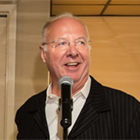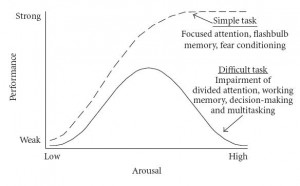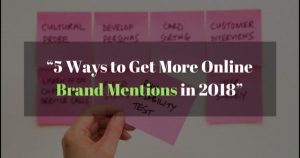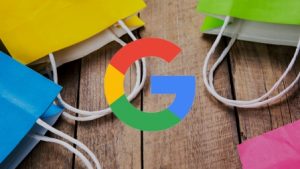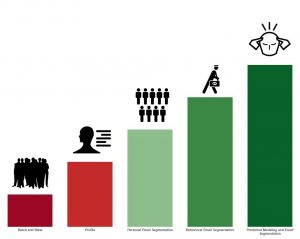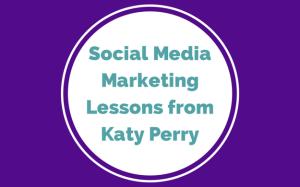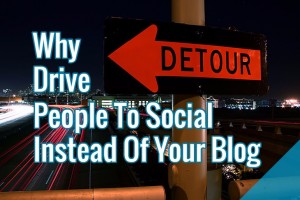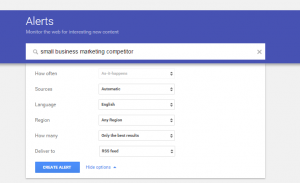On the back iof a solid earnings performance, LinkedIn Marketing Solutions announces new features.
“We’re very happy with the position we’re in and we have some confidence going into the next few quarters.” Penry Price, VP, Marketing Solutions at LinkedIn was reflecting on the recent healthy earnings report for FY22 Q1: LinkedIn revenue up 42%, advertising revenue up 61% YoY.
Indeed, the Marketing Solutions business line had originally been conceived primarily as an ad business, but there has been significant evolution, said Price, away from just job listings and in the direction of being an engagement platform for professionals — “With jobs still certainly at the center.”
The evolution continues, as reflected in the new My Company Tab.
A place for employees to engage
“This is not seen as a space where companies are interrupting,” said Price. LinkedIn, he believes, is the one social media platform which actively welcomes companies, not just as advertisers but also as members, at both company and employee levels. “Companies are seen as adding and contributing to the overall LikedIn experience,” he said. Users can find out more about companies they might one day want to work for; they can learn about products and services.
“How do companies’ employees engage on the platform — as emloyees of the company? We’re up something like 45% or 48% in conversations over the last year. A lot of it is employees speaking about their companies more than they ever were. We always thought they might have been proud of their products or services, but what happened in the last two years, with COVID acclerating it, is that they’re proud of the way their company is supporting the employee base. People are taking more broadly to social media — but it works contextually on LinkedIn — and saying ‘I love working at this place.’”
LinkedIn, explained Price, is leaning into this phenomenon, working deliberately to expose users to more of these types of conversations. In addition to algorithms, LinkedIn has a sizeable team of human editors who can intervene to highlight this kind of content. Companies are changing too: “Companies are embracing this notion of being more human, showing their vulnerabilities, showing what excites them and disappoints them. We’re giving more tools for companies to show up this way.”
The My Company Tab offers any organization on LinkedIn an exclusive space for its employees to interact and for the company itself to share content and help build employee advocacy. “It’s probably our biggest investment going back to the core principle that companies are welcome on LinkedIn.”
Price connects this initiative with the possibility of activating virtual events on LinkedIn, including live video, created in response to the cancelation of in-person events during the pandemic lockdown. “We’re building a lot of tools for companies to allow them to have events. They can do that on a place that makes sense to them, on LinkedIn, where they have a lot of company followers already there, employees already there, prospects are there.”
How communities are born
Certainly some people take the view that LinkedIn is too transactional to be a platform for building enduring communities. For example, Melanie Aronson, founder and CEO of community management platform Panion, described the LinkedIn (and Slack) experience as “I don’t really know this person but I need some information; we never get to know each other or connect in a real way.” Price sees the platform trending away from that.
“Part of it goes back to one of the first meetings I had with our old CEO Jeff Weiner. I talked about how my own LinkedIn experience had been fairly transactional — my looking for somebody to accomplish something — and he said, networks have to be fed to survive. When you actually start to see a healthier network, what gets born out of that is a community. People start to gravitate towards sub-communities, maybe around certain companies or certain topics. We’ve started to see this manifest over the last five years or so. It’s not about jobs, it’s about feeding the community with the information it needs to thrive.”
Another opportunity Price sees is building communities for products — at least if one overlooks the communities built by vendors themselves, exclusively for their own products (Salesforce and HubSpot have done this effectively in the marketing tech space). “There are lots of communities around food and travel, all kinds of things, but there’s no community we’ve found that is built for products that help our professional lives. One of the next accelerators for LinkedIn, from a usage standpoint as well as value to companies, is if we can help build product communities.”
Adding company assets to product pages
A separate initiative actually has strong parallels with what Yelp has been doing to encourage businesses to share health-related information such as mask requirements and curbside pick-up availability. In the LinkedIn page header there will be space for companies to be transparent about their workplace policies — for example on vaccination and remote working.
This is just one example of content that can be rolled out on Product Pages. “This is an important area for us,” said Price. “We want companies to recognize that they can add a lot more of their own assets.” Price had one CMO tell him: “You’re building my website.” It’s no replacement for a company website, Price explained. It’s a way to deliver information about your company to possible customers and possible employees who have not yet visited your website but are on LinkedIn.
“Most professionals in the world are there already,” Price said.
The post LinkedIn is leaning into community appeared first on MarTech.
MarTech(32)
Report Post